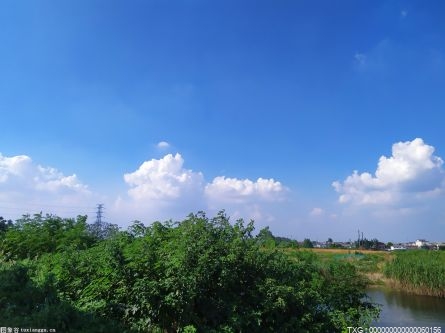世界球精选!TF116-Coral Reef Communities
- 商洛在线
- 2023-05-26 11:12:40
- 来源:哔哩哔哩
Coral Reef Communities
Coral reefs are massive underwater structures made from the hard limestone exoskeletons of thousands of tiny living organisms (coral polyps) produced one on top of another in warm, clear, shallow ocean waters. Living polyps extend upward and outward from the coral colony center and live on top of the old dead exoskeletons. Coral reef communities are crowded with other animals representing virtually every major animal phylum. Space is at a premium on reefs, corals, seaweeds (various forms of algae), sponges, or other organisms cover virtually every surface. Because both corals and algae require light to survive, access to light, like space, is also a resource subject to competition.
 (相关资料图)
(相关资料图)
Fast-growing, branching corals can grow over slower-growing, encrusting, or massive corals and deny them light. In response, the slower-growing forms can extend stinging filaments from their digestive cavity and kill their competitor’s polyps. Undamaged polyps on the faster-growing, branching coral, however, may grow very long sweeper tentacles, containing powerful nematocysts (stingers) that kill polyps on the slower-growing form. The faster-growing form repairs the damage and continues to overgrow its competitor. In addition to sweeper tentacles and stinging filaments, corals have several other
mechanisms available for attack or defense.
In general, slower-growing corals are more aggressive than fast-growing species. In cases where a competitor cannot be overcome, however, corals may survive by taking advantage of differences in local habitats. Massive corals are generally more shade tolerant and able to survive at greater depths. Therefore, on many reefs it is the fast-growing, branching corals that ultimately dominate at the upper, shallower portion of the reef, whereas more massive forms dominate in deeper areas.
Corals also must compete with other reef organisms, each with its own strategies for survival. Sponges, soft corals, and seaweeds (algae) can overgrow stony corals and smother them. Algae are competitively superior to corals in shallow water but less so at depth. Survival of coral in shallow water, therefore, may depend on grazing by plant-eating echinoderms (starfish and sea urchins) and fishes. In Jamaica, overfishing removed most of the plant-eating fish from coral reefs. Initially, algal growth was kept in check by grazing sea urchins, but in 1982, a pathogen reduced the population by 99 percent. Without grazers, the algae were able to completely overgrow the coral.
Competition may occur among other reef communities. Grazing by urchins and fishes is important in preventing seaweeds from overgrowing the reef. The dominant algae on a healthy reef are usually fast-growing filamentous forms or coralline algae, well protected by calcification (hardening) and the production of noxious chemicals. These algae are inferior competitors to larger, fleshier seaweeds, so grazing by urchins and fishes on the larger seaweeds allows these algae to persist. Grazing on plants is greatest in the shallow reef areas but decreases with depth, where lower temperatures and light reduce algal growth. The reef is, therefore, a mosaic of microhabitats with different levels of grazing and different algal communities.
An additional complexity arises from the activity of damselfish. Because they are territorial, many damselfish species exclude grazers and other species from certain areas of the reef. Algae grow rapidly in these territories, providing habitat for many small invertebrates but overgrowing the corals. Branching corals tend to dominate in damselfish territories because they are upright and faster growing than the more massive or encrusting forms.
Although less studied than on rocky shores, predation almost certainly has a significant influence on the community structure of coral reefs. Fish and other predators may preferentially prey on such competitors of corals as sponges and gorgonians, giving competitively inferior reef corals an advantage in securing space. Many species of fish, mollusks, and crustaceans also feed directly on coral polyps. Several surgeonfish and parrotfish may actually pass coral skeletons through their digestive tracts and add sediment to the reef. Both fish and invertebrate corallivores (coral-feeding organisms) seem to attack faster-growing, branching species preferentially, perhaps preventing slower-growing forms from being overgrown. Corallivores, however, rarely ever completely destroy a coral colony except in cases where tropical storms or humans have already done severe damage. The fact that almost all small invertebrates on reefs are so well hidden or highly camouflaged is another indicator of how prevalent predation is on reefs and its importance in determining reef structure.
【Paragraph 1】
Coral reefs are massive underwater structures made from the hard limestone exoskeletons of thousands of tiny living organisms (coral polyps) produced one on top of another in warm, clear, shallow ocean waters. Living polyps extend upward and outward from the coral colony center and live on top of the old dead exoskeletons. Coral reef communities are crowded with other animals representing virtually every major animal phylum. Space is at a premium on reefs, corals, seaweeds (various forms of algae), sponges, or other organisms cover virtually every surface. Because both corals and algae
require light to survive, access to light, like space, is also a resource subject to competition.
1. According to paragraph 1, all of the following are true of coral reefs EXCEPT:
A. Coral reefs grow biggest in the deepest waters of the ocean.
B. The organisms living around coral reefs compete for limited resources.
C. There are many different organisms in coral reef communities.
D. Coral reefs consist of the outer skeletons of small living organisms.
【Paragraph 2】
Fast-growing, branching corals can grow over slower-growing, encrusting, or massive corals and deny them light. In response, the slower-growing forms can extend stinging filaments from their digestive cavity and kill their competitor’s polyps. Undamaged polyps on the faster-growing, branching coral, however, may grow very long sweeper
tentacles, containing powerful nematocysts (stingers) that kill polyps on the slower-growing form. The faster-growing form repairs the damage and continues to overgrow its competitor. In addition to sweeper tentacles and stinging filaments, corals have several other mechanisms available for attack or defense.
2. According to paragraph 2, how do fast-growing branching corals defend themselves from attacks by slower-growing corals?
A. By producing stinging sweeper tentacles
B. By growing on top of the slower-growing corals
C. By blocking the light to the slower-growing corals
D. By destroying the stinging filament of the slower-growing corals
【Paragraph 4】
Corals also must compete with other reef organisms, each with its own strategies for survival. Sponges, soft corals, and seaweeds (algae) can overgrow stony corals and smother them. Algae are competitively superior to corals in shallow water but less so at depth. Survival of coral in shallow water, therefore, may depend on grazing by plant-eating echinoderms (starfish and sea urchins) and fishes. In Jamaica, overfishing removed most of the plant-eating fish from coral reefs. Initially, algal growth was kept in check by grazing sea urchins, but in 1982, a pathogen reduced the population by 99 percent. Without grazers, the algae were able to completely overgrow the coral.
3. The phrase “kept in check” in the passage is closest in meaning to
A. limited
B. prevented
C. allowed
D. stimulated
4. In paragraph 4, why does the author discuss the effects of removing planteating fish and sea urchins from coral reefs?
A. To identify a situation that contributes to the dominance of corals in shallow waters
B. To demonstrate the importance of grazing on seaweeds for the survival of some corals
C. To provide evidence that seaweeds are better competitors than coral at depth
D. To argue that sea urchin pathogens also attack corals
5. According to paragraph 4, all of these pairs of organisms are in competition EXCEPT
A. corals and sponges
B. algae and corals
C. echinoderms and corals
D. sea urchins and algae
【Paragraph 5】
Competition may occur among other reef communities. Grazing by urchins and fishes is important in preventing seaweeds from overgrowing the reef. The dominant algae on a healthy reef are usually fast-growing filamentous forms or coralline algae, well protected by calcification (hardening) and the production of noxious chemicals. These algae are
inferior competitors to larger, fleshier seaweeds, so grazing by urchins and fishes on the larger seaweeds allows these algaeto persist. Grazing on plants is greatest in the shallow reef areas but decreases with depth, where lower temperatures and light reduce algal growth. The reef is, therefore, a mosaic of microhabitats with different levels of grazing and different algal communities.
6. According to paragraph 5, fast-growing filamentous or coralline algae are usually the dominant algae on healthy coral reefs in part because they
A. are not affected by noxious chemicals produced by other organisms
B. are less attractive as food for sea urchins and fishes than bigger seaweeds are
C. occupy the areas of coral reefs that have lower temperatures and less light
D. can live in a wider variety of microhabitats than their competitors can
【Paragraph 7】
Although less studied than on rocky shores, predation almost certainly has a significant influence on the community structure of coral reefs. Fish and other predators may preferentially prey on such competitors of corals as sponges and gorgonians, giving competitively inferior reef corals an advantage in securing space. Many species of fish, mollusks, and crustaceans also feed directly on coral polyps. Several surgeonfish and parrotfish may actually pass coral skeletons through their digestive tracts and add sediment to the reef. Both fish and invertebrate corallivores (coral-feeding organisms) seem to attack faster-growing, branching species preferentially, perhaps preventing slower-growing forms from being overgrown. Corallivores, however, rarely ever completely destroy a coral colony except in cases where tropical storms or humans have
already done severe damage. The fact that almost all small invertebrates on reefs are so well hidden or highly camouflaged is another indicator of how prevalent predation is on reefs and its importance in determining reef structure.
7. Which of the sentences below best expresses the essential information in the highlighted sentence in the passage? Incorrect choices change the meaning in important ways or leave out essential information.
A. The presence of only very small invertebrates on a reef is an indication of widespread predation.
B. Most reefs are structured in a way which allows small invertebrates to remain hidden or camouflaged.
C. Almost all small invertebrates are hidden or camouflaged, indicating the extent and importance of predation to reef structure.
D. Almost all of the small invertebrates on reefs are difficult to find because they are so highly camouflaged.
8. Paragraph 7 mentions all of the following as effects of predation on the community structure of coral reefs EXCEPT
A. Corals are advantaged when predators prefer to attack competitors of corals.
B. Faster-growing corals are prevented from overgrowing slower-growing corals when faster-growing species are preferred
by competitors.
C. Predation contributes to the sediment deposit of the reef.
D. Small invertebrates are exposed to competitively superior organisms.
【Paragraph 3】
In general, slower-growing corals are more aggressive than fast-growing species. ■In cases where a competitor cannot be overcome, however, corals may survive by taking advantage of differences in local habitats. ■Massive corals are generally more shade tolerant and able to survive at greater depths. ■Therefore, on many reefs it is the fast-growing, branching corals that ultimately dominate at the upper, shallower portion of the reef, whereas more massive forms dominate in deeper areas. ■
9. Look at the four squares【■】that indicate where the following sentence could be added to the passage.
For example, different species of corals have different needs for light.
Where would the sentence best fit?
10. 【Directions】An introductory sentence for a brief summary of the passage is provided below. Complete the summary by selecting the THREE answer choices that express the most important ideas in the passage. Some answer choices do not
belong in the summary because they express ideas that are not presented in the passage or are minor ideas in the passage. This question is worth 2 points.
Coral reef communities include many different organisms that must compete for resources such as space and light.
●
●
●
Answer Choices
A. In order to keep from being overgrown, the different species of coral kill each other’s polyps, or live in different local habitats within the reef community.
B. Competition among the different species of corals is more intense than that between corals and other coral reef inhabitants.
C. Predation shapes reef structure by getting rid of competitors of corals, but coral polyps themselves are also eaten, as are many reef inhabitants.
D. Coral reefs are divided into a shallow upper portion and a deeper lower portion with branching corals dominating in the lower portion.
E. Grazing by fishes and urchins prevents algae and seaweeds from overgrowing the corals, although damselfish exclude grazers from some areas.
F. Fish and invertebrate corallivores are the most common cause of coral colony destruction, followed by tropical storms and damage by humans.
标签:
- 红腰豆怎么煮烂 红腰豆怎么煮不破皮?
- 自制面包不够松软什么原因 新手怎么学做面包?
- 贵阳交通 ,数字“添翼”
- 天天时讯:立体传播 服务大局 屡创新高 大江直播成重大活动网络传播主阵地
- 大国重器 为国储能——金坛盐穴压缩空气储能电站运行一周年记-环球热消息
- 世界球精选!TF116-Coral Reef Communities
- 重点聚焦!江天化学:5月25日融资买入91.98万元,融资融券余额4463.55万元
- 宿迁市发布2023年中等学校招生工作意见_当前快报
- 酸奶能不能加热饮用?酸奶加热正确方法介绍
- 连云港市发布2023年中高考宁静护考工作方案|当前时讯
- 夯实产业链现代化关键支撑点_世界新动态
- 砚台和端砚有什么关系 端砚为什么叫端砚?
- 数实相融 算启未来 贵阳贵安奋力推动数字经济高质量发展_实时
- 贵州持续推动数字化融合改造 带动二点五万家企业上“云”用“云”
- 茶树菇用冷水浸泡还是热水 茶树菇泡一夜还能吃吗?
- 贵阳贵安:传统农业装上“智慧大脑”
- 洁厕灵不能和什么一起用?洁厕灵使用禁忌
- 百万元门票“壕”礼来喽! 全球速讯
- 牛肩肉可以做牛排吗 牛肩肉适合煎吗?
- 【全球快播报】宁波顺洋国际物流有限公司
- 景顺长城新能源产业股票c怎么样 景顺长城新能源产业股票a怎么样 每日速读
- 洗涤盐能食用吗 洗涤盐是做什么用的?
- 黄酒分类有哪些?黄酒分类及其特点介绍
- 炫酷!一部MR视频带你穿梭“中国数谷”!这就是“数实相融”的世界→ 今头条
- 宁肃 滚动
- 2023年扬州市区中等职业教育招生政策公布|独家
- 绝美!每一张梵净山云海风景都是封面照|微头条
- 新资讯:【海报】2023数博会精彩纷呈亮点多
- 贵州省人民代表大会常务委员会任免名单
- 生产线高速运转
- 美式“反恐”= 数百万人“间接死亡” 快消息
- 教育部部署开展“2023高考护航行动”
- 炖鱼头汤怎么出奶白色 炖鱼头汤多长时间?
- 纽约油价24日上涨
- 富士App国家或地区英文描述严重错误!公司致歉:已下架
- 日本福岛居民——“坚决反对核污染水排海,守护孩子们的未来”(第一现场) 每日热文
- 数博会怎么逛?不同主题各自精彩 8条观展线路供参考
- 螃蟹是海鲜吗 梭子蟹是海鲜还是河鲜?
- 天天快讯:现代投资:5月25日融资净买入142.23万元,连续3日累计净买入517.51万元
- 丝袜抽丝了咋办?袜子抽丝小妙招介绍
- 乐亭特产有哪些 乐亭什么出名?
- 今起至29日将有一轮降水“暴击”_微速讯
- 杨丽萍与小34岁型男热恋?为跳舞不生孩子不吃饭 曾被曝洗澡都靠男助理"伺候"
- 菩提果能吃吗 吃菩提果有什么功效?
- 对外文化贸易“千帆出海” 甘肃一活动入选国家重点计划
- 花蜜和蜂蜜有什么区别 花蜜和蜂蜜哪个好?
- 伸出关爱之手 助力学子圆梦 全省结对关爱行动困难学生资助政策解读
- 天天快资讯丨呵护婴幼儿健康成长 甘肃省举办托育服务宣传活动
- 核桃怎么保存 带壳核桃冷冻还是冷藏?
- 2023广东荔枝“12221”品牌推介活动走进西安 布局深耕西北市场
- 衣服发霉怎么才能洗掉 衣服发霉穿了会得病吗?
- 甘肃省纪委监委机关结对关爱行动启动
- 山西电影学院有了“虚拟拍摄创作实践基地” 简讯
- “甘味”特色农产品亮相山东 甘鲁农业合作结硕果
- 环球今日讯!财政部下达3亿元补助资金改善我省高中办学条件
- 中信证券:海外宠物经济具备消费韧性 中长期有望稳步增长_当前速读
- 世界今日讯!陕西省人社厅出台18条措施支持民营企业高质量发展
- 扬中市新坝镇第二届枇杷文旅节开幕
- 今年商洛冬小麦收获期推迟3到5天 世界百事通
- 当民间杂技演员被要求“飞得更高”
- 先睹为快!30秒带你抢先探馆2023数博会现场
- 每日观察!在幸福村与幸福相遇 贵定县举办多彩"四月八"系列活动
- 瓦格纳从巴赫穆特撤出,乌高官:反攻已在1500公里沿线进行|报道
- 新资讯:局地中到大雨!商洛迎来新一轮降水天气
- 长城举报比亚迪 为私利还是正义?常压油箱是否致排放不达标?
- 赵璟在柞水县督导检查维稳安保工作时强调:绷紧思想之弦 强化务实举措 持续用力守牢安全稳定坚固防线 天天信息
- 倒计时1天!多彩宝将亮相2023数博会展会现场-全球快报
- 求是调研看四川丨成都天府国际生物城:让医药创新造福更多国人
- 售价超1400元!苹果天价旅行保温杯上架、可定位 全球快播
- 2023体育"科"代表|@上班族 肌肉疲劳?来试试字母拉伸法
- 华泰证券:“AI+教育”C端潜力或更优|焦点资讯
- 数博会提前探馆,记者贡献了一波“表情包”!满眼都是高科技,你最期待哪一个?
- 【世界播资讯】散户出手超76%的成交额 这只智能机器概念股火了!高位龙头股集体发布风险提示!
- 2023年南京都市圈创新合作大会举办-世界观天下
- 天天微资讯!南京垃圾分类志愿者已超6万名
- 观察:为什么我们热爱明朝?如何看待明朝在历史上的地位?
- 乘火车2.5小时内可抵城市间禁设民航客运线,法短途航班禁令引争议|精选
- 世界动态:多地拟限制上路 “老头乐”究竟该去还是留?
- 【世界热闻】深圳限外地车时间路段-深圳限外地车时间
- 微速讯:美食推荐:香菜炒茄子,剁椒蒸带鱼,咖喱炖牛肉的家常做法
- 较强降雨过程来袭 陕西未来三天雨雨雨
- 商务部部长王文涛会见美国商务部长雷蒙多|当前快讯
- 全球热点!南京调整住房公积金政策:使用公积金贷款购二套房不再限定首套房面积
- 禁渔期内使用钓具非法捕捞 全国“延绳钓入刑”第一案连云港开审
- 快资讯:董事长雇人拉高出货!3200万保证金盈利4800万 证监会:操纵股价 罚没9600万
- 【世界速看料】“两业融合”走在前 高质量发展添动力
- 江苏政务服务跨区域协同再添新实践 豫皖两县50件事项在吴江“通办”|最新
- 有无资费?好处在哪?一号连天下的5G异网漫游
- 【世界新视野】被风吹过的夏天歌词肖战 被风吹过的夏天歌词
- 【独家】基金调研丨交银施罗德基金调研时代电气
- 天天速递!禋
- 当前热议!我省启动校外培训“平安消费”专项行动
- 世界通讯!盛路通信(002446):5月25日北向资金增持21.69万股
- 全球看点:我省专项整治粮食购销领域腐败问题
- 【焦点热闻】26日至29日我省将出现明显降雨天气
- 全球速读:辽宁丹东可提供帅康微波炉维修服务地址在哪
- 天天实时:山西转型综合改革示范区税务局:“直通车+专家团”精准服务“链主”企业
- 焦点速递!什么是同性基因(同性恋基因是影响人和动物性取向的基因)
- 我省两位学者荣获第三届全国创新争先奖
- 环球微头条丨【科技前沿】我科学家制出绝缘纳米新材料极端条件下仍可保持优异机械和电绝缘性能
相关推荐
三氯蔗糖是什么糖 三氯蔗糖对血糖有影响吗?
聚焦 2023/04/23松茸为什么不能水洗 松茸学名是什么?
聚焦 2023/04/23北海是哪个省城市 北海有什么特色小吃?
聚焦 2023/04/23鱼缸用什么消毒杀菌好 鱼缸定期杀菌用什么药?
聚焦 2023/04/23海水盐度一般是多少 海水成分包括哪些?
聚焦 2023/04/23热门资讯 日 周 总
安徽省率先实现红托竹荪工厂化种植 助推食药用菌产业错位化高质量发展
健康 2022/09/05中山首个“港澳药械通”医疗器械获批 目前国内尚无同类产品
健康 2022/08/29辽宁省建立首批食品安全抽检专家库 化解食品安全风险隐患
健康 2022/08/192022太湖湾生命健康未来大会举行 无锡推动生命健康产业发展跃级
健康 2022/08/0862岁阿姨“捂出”热射病被送进ICU 免疫力低下人群更要注意这些
健康 2022/07/21暑期档全国电影票房破75亿 共有91部新片上映
节目 2022/08/16广东文艺院团积极寻求创作与市场全面“破圈” 激活高雅文艺演出“内循环”
节目 2022/08/02冯小刚新剧时隔25年重回小荧幕 多个话题均已实现阅读量破亿
节目 2021/07/14动画站上7月影市“C位” 吸引多家公司掘金
节目 2021/07/06人工智能等技术赋能 推动传统戏曲文化与表演创新
节目 2021/07/02我国短视频领域市场规模为2051.3亿元 同比增长57.5%
直播 2021/06/17TFBOYS吸金力也不容小觑 峰峻文化能否顺利运营还需一定的市场机遇
直播 2021/06/16打造自营电商 “美团小店”加码实物电商
直播 2021/06/08发力企业采购领域 京东申请注册京东工业商标
直播 2021/06/04全国已有345个城市包裹实现“半日达”
直播 2021/06/02推荐More
- 山西电影学院有了“虚拟拍摄创作实践基地” 简讯
- 今起至29日将有一轮降水“暴击”_微速讯
- 环球今日讯!财政部下达3亿元补助资金改善我省高中办学条件
- 我省两位学者荣获第三届全国创新争先奖
- 当前热议!我省启动校外培训“平安消费”专项行动
- win7系统瘦身工具_win7系统瘦身
- 今日辟谣(2023年5月25日)
- 环球最新:一个关于社会再生产的故事
- 全球资讯:黔源电力(002039):5月25日北向资金增持7.55万股
- 小番财务客服电话(小番财务)-播报
- 微信新增锁定功能遭网友吐槽:QQ都用十几年了
- 乡村振兴的重点是什么在革命老区_乡村振兴的重点是什么|环球今头条
- 天天微头条丨地球城分类信息网官网_地球城分类信息网
- 神雕之异能传说在线观看_神雕之异能传说
- 救助站温情守护流浪女子-世界今亮点
- 世界滚动:韦尔股份(603501)跟踪报告之十三:CIS龙头手机业务拐点渐近 车规和显示芯片打开长期成长空间
- 共对新威胁 共议新安全 2023网络安全运营与实战大会开幕_世界即时看
- 环球速读:河北成为强势名酒竞争之地 本地酒的优势在哪儿?老白干回应
- 商务部:对美光公司审查是维护国家安全的必要措施
- 众泰2008车钥匙换电池图片_众泰2008钥匙怎么匹配详细点 环球观天下
- 左肩胛骨疼是肺病吗_左肩胛骨缝疼是肺癌吗
- 毒液百度网盘资源(毒液百度云资源)
- 飞猪618开售首日酒店活动商品成交额同比增长超98%-今日讯
- 江西乡村振兴见闻:“新农人”的“创业带富经” 全球今日报
- 环球热门:做梦梦见狗咬脚出血是什么意思_梦见被狗咬出血
- 【世界说】美媒:有意为之!美国严重且普遍的贫富文化是制度设计造成的 环球观天下
- 日本福岛核事故灾民:希望更多人一起反对核污染水排海_全球焦点
- 小“蛋糕”蕴含大市场 第25届中国国际焙烤展在沪举行 天天速看
- 童心筑梦新时代,青春放歌颂祖国 高新一中初中校区举行红歌展演活动|环球速看料
- 【天天时快讯】倚天屠龙之葵花武帝_倚天屠龙之葵花武帝
- 不是王楚钦!不是孙颖莎!2大00后世乒赛破纪录,刘国梁挖到宝
- 全球快资讯:嬴荡举鼎而死_赢荡
- 全球速递!福建气温正爬升 午后有阵雨
- 长城汽车:公司经营状况稳健,并未发生重大改变 资讯推荐
- 外企撤离中国?不!在中国有家的归属感
- 铁杵成针文言文翻译视频_铁杵成针文言文翻译
- 【世界热闻】微信群群发软件靠谱吗_微信群群发软件
- 全球速讯:中方宣布美光未通过安全审查,白宫急忙回应,称正与中方沟通
- 冷热水龙头怎么拆卸图解法_水龙头怎么拆卸图解法-全球速看
- 孟州市谷旦镇:农村幸福院托起老年人的“幸福梦”
- 热点!5月25日尚能石化石脑油价格平稳
- 快速审核的信用卡有哪些 试试这些_天天快消息
- 今日热文:宸展光电: 关于全资子公司对外股权投资的公告
- 世界今日报丨这份“情”沉甸甸:他连续三年干了同一件事
- 咖啡豆价格上涨190%!哄抢咖啡豆下,品牌却在低价卖咖啡-全球新资讯
- 印媒:美国反华科技战毫无根据且无异于自我毁灭-每日热闻
- 睿能科技:公司主要从事工业自动化控制产品的研发、生产、销售和IC产品的分销业务
- 当前热门:“举报门”后长城汽车、比亚迪两败俱伤:午后股价双双走低,市值共蒸发260亿
- 当前速读:江苏部署启动2023年汛期地质灾害防治工作
- 又一A股房企将退市 近15万股东踩雷!高管紧急增持无力回天
- 环球实时:一寸缂丝一寸金 这到底是怎样的一门手艺?
- 环球新消息丨商务部:对美光公司审查是维护国家安全的必要措施
- 记者探营京郊蔬菜基地:白菜跌成“白菜价”,去年4元今年六七毛,菜农纷纷喊难-天天速递
- 全球球精选!机收“比武”保丰收 “中原粮仓”迎来麦收时刻
- 有效整治粮食“跑冒滴漏”
- 女孩子性格暴躁的原因
- 长城汽车:公司经营状况稳健 并未发生重大改变 观天下
- 翡翠原石铁锈皮
- 排骨高压锅压多长时间就熟了 全球球精选
- 13岁女孩叛逆期该怎样教育|观点
- 热讯:废旧电池是不是可回收的垃圾
- 热头条丨广东省十大民办本科大学排名榜(适合压线生捡漏的民办二本大学)
- 全球热议:塞尔达传说王国之泪手柄设置攻略最详细[多图]
- 今天周大生黄金首饰价格行情(2023年5月25日)
- 我省修订未成年人保护条例-天天观察
- 每日播报!停息挂账卡还能用吗?信用卡欠款多少影响个人信用?
- 产业 | 开启“智慧”时代 四川文旅产业向深度数字化迈进
- 最新数据公布!昆明机动车保有量3332659,驾驶人4052792 世界焦点
- 环球新动态:网贷逾期45年拖欠多久会上征信
- 图集丨实拍高考倒计时冲刺表情 你奋斗的样子真美!
- 走进北京科技周,感受量子科技的中国“加速度”
- 2023年黑龙江二级建造师准考证哪天打印
- 23年黑龙江二建准考证打印入口哪天开通 环球资讯
- 海南二级建造师考试报名系统|世界快播报
- 海南二建打印准考证网址2023
- 环球焦点!数据复盘:13亿净流入光伏 龙虎榜抢筹天孚通信
- 黑龙江省人事考试网:2023二建打印准考证入口
- 翡翠原石分辨
- 初中孩子不想读书怎么办 每日热点
- 动态:孩子上课不开口说话怎么办
- 俞敏洪指出五台山英文翻译错误
- “迪丽热巴 杨幂”在直播间卖货?多家电商被曝用AI换脸直播
- 世界今亮点!泰永长征(002927)5月25日主力资金净卖出154.70万元
- 骨刺=骨头长刺?专家解答看这里! 全球即时
- 世界热头条丨安诺其:具体数据已在公司定期报告中披露,敬请查阅
- 【全球速看料】凌云诺花神节攻略
- 快讯:不用抛光膏翡翠什么样
- 当前热文:交养老保险要交多少年?怎么交?
- CSGO开箱白嫖能出传说皮肤吗 高爆率的CSGO开箱平台汇总 每日观察
- 世界球精选!山东淄博市综合能源港布局专项规划(2023-2025年)
- 5年新低!深圳车牌最低成交价跌至1万元_世界头条
- 沪指险守3200点 外资连续3天撤离!热门题材持续活跃
- honeyview开启捕捉窗口的方法_看点
- 视频|让爱无碍
- 从贫困县到进步县之变——镇原县获评“县域经济发展进步县”的背后 天天要闻
- 环球头条:Opera Aria 是集成 AI 的全新浏览器体验
- 探索“合作社+企业”产业模式 兰州农家乐带动村民走出致富路
- 肥皂加什么可爆炸 肥皂有哪些种类?
- 奋力推进县域经济高质量发展——访陇西县委书记祁雪峰
- 南京医保报销比例及范围2023年 具体最新消息如下!
- 柿子饼怎么晒干 柿子饼皮能吃吗?
- 海苔是不是紫菜 海苔是蔬菜吗?
- 旺旺雪饼配料表(旺旺雪饼的配料成分)-环球今热点
- 头条焦点:时政纪录片丨长安复携手 丝路启新程——习近平主席主持中国-中亚峰会纪实
- 加拿大专家:国债流动性堪忧 美国面临国债市场可能崩溃的威胁























 营业执照公示信息
营业执照公示信息